Bass strings are responsible for helping your bass sound its best. Whilst the tonal and tactile differences between string types may be subtle, every player has their preference, and bass strings can make a big difference to your playing experience.
But how do you choose the right bass strings? That’s where I come in. In this guide, I’ll help you determine which string type is right for you, and link some options for you to explore yourself. So, buckle in, and let’s begin.
Gauges
 The first thing you’ll want to think about is the size of your bass strings, and their length too! There are lots of different string gauges on the market these days, with thicker strings generally having a beefier, darker tone. Lighter gauge strings tend to have a bit more ‘twang’ and ‘bite’.
The first thing you’ll want to think about is the size of your bass strings, and their length too! There are lots of different string gauges on the market these days, with thicker strings generally having a beefier, darker tone. Lighter gauge strings tend to have a bit more ‘twang’ and ‘bite’.
In terms of feel, thicker bass strings are heavier and slightly harder to press down, but obviously offer more durability and ‘tightness’ (they don’t fly all over the place like spaghetti).
The standard gauges for a four-string bass are 0.045 (inches thick) to 0.105, or 0.045 to 0.125 for a five-string. These gauges will often be displayed without the ‘0’, so 45-105 or 45-125.
If you’re into hard rock or metal, and you’re really going to be digging into those strings, you might want to consider a thicker gauge. Thicker strings will be better able to handle aggressive playing.
On the flip side, if you like a cleaner tone with lots of ‘twang’ and bite, then thinner strings might be up your alley – especially if you like to perform bass solos! They also require slightly less finger strength to play.
Of course, if you want a nicely balanced tone and feel, there’s nothing wrong with straight-up standard gauge strings. These are dynamic enough for virtually any genre. Beginners, you’re best off starting with standard strings and then tweaking in the future once you have a little experience behind you.
If you have a longer scale bass (more than 34″), you’ll need longer strings to cover that extra distance, so bear this in mind when choosing.
Material
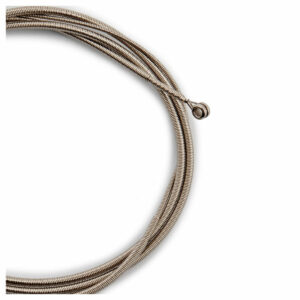 Nickel-plated steel? Stainless steel? Nickel wound? Where do you begin when scoping out string material? Right here, of course!
Nickel-plated steel? Stainless steel? Nickel wound? Where do you begin when scoping out string material? Right here, of course!
String material can have a fairly significant impact on your tone, so it’s worth going for the right one from the get-go.
Here’s a breakdown of the most common string types:
- Stainless steel: The brightest strings both visually and sonically. These are great for aggressive playing, with plenty of midrange and high-end bite that will really push through the mix – especially useful if you’re playing with distorted guitars and busy drums.
- Nickel: Warm-sounding strings which have a smooth voicing. Great for a variety of genres, these are used by many bassists of all ilks. Their darker tone gives them a rich, full body, which will help your bass blend in with other instruments.
- Nickel-plated steel: A nice balance between their nickel and steel counterparts, these strings have a tone which leans on the brighter side, but also have nickel’s warmth for added dynamism.
- Cobalt: These beauties boast a higher output than other bass strings, because cobalt has a higher magnetic charge, meaning it produces a stronger pull on the pickups for a more powerful signal. This equates to more power and volume from each pluck.
- Bronze: Usually seen on acoustic basses, bronze bass strings have a nice, soft, balanced tone. Warm and smooth, they’re perfect for slightly more sophisticated jams around the campfire or acoustic-based songs.
If you’re a beginner, you’ll most likely be playing your stock strings that came with your instrument, and you won’t need to change them for a while. However, when they do get gunked up and it comes time to change them, you can use the above list to try and hone your tone even more.
Winding
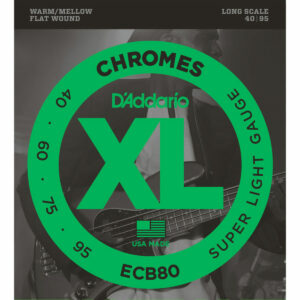 I’m not winding you up. The next thing you’ll want to look at when choosing the right bass strings is how they’re wound.
I’m not winding you up. The next thing you’ll want to look at when choosing the right bass strings is how they’re wound.
This’ll make a subtle difference to their feel and dynamics, like how much noise they produce as your finger slides across them.
The main types of bass string windings are roundwound, flatwound, halfwound.
Roundwound strings generally have a slightly brighter tone, with plenty of attack and sustain.
The grooves all the way along the string do generate noise as you slide your finger along, which means you have to exercise slightly more control when playing them, but they have a great tone.
If you’re looking for ultra-low noise strings, flatwounds are the way to go. Unlike roundwounds, they boast a completely smooth surface, which helps to eliminate finger noise as you’re gliding between frets.
They sound a bit warmer and smoother but offer less sustain, and they tend to be a fair bit pricier, given that they’re more difficult to make. In essence, they’re great if you want a rich, vintage sound.
Finally, there’s half roundwound bass strings. These are roundwound strings that have been ground down to give the smooth feel of flatwounds. Again, they have a warmer feel and generate less finger noise, but still retain some of the brightness synonymous with roundwounds.
Coated strings
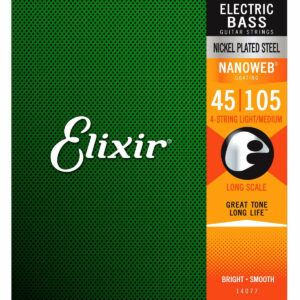 At this point, it’s worth giving a special mention to coated bass strings.
At this point, it’s worth giving a special mention to coated bass strings.
As you continue to play regular bass strings time and again, the sweat and natural oils from your hand, as well as dust, dirt and bacteria, get into the grooves and start wearing the strings down.
Over time, this really builds up, and you’re left with dull, lifeless strings.
As the name suggests, coated strings are covered in a special formula which serves as a barrier to all the aforementioned string slayers. This massively extends their lifespan and keeps their tone intact for longer.
Of course, this makes them slightly more expensive, but almost certainly a worthy investment.
Elixirs are probably the most well-known coated strings, and their polyweb and nanoweb coatings are certainly up to the task. However, there are now plenty of other manufacturers doing the same thing, such as D’Addario with their XT bass strings.
It’s well worth exploring coated options if you want more consistency for longer.
So, which bass strings are right for me?
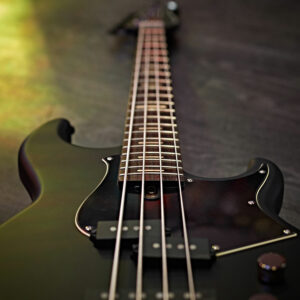 The reason we’re all here. Well, more you than me. But still. The truth is, you’ll find out after you’ve tried a few different options.
The reason we’re all here. Well, more you than me. But still. The truth is, you’ll find out after you’ve tried a few different options.
Beginners will need a bit of time to discover the type of tones they like, and then try to achieve that through string choices. So, if this is you, take your time.
Remember that the vast majority of your tone will come from your amp anyway (unless you’re playing acoustically), so don’t overthink when it comes to strings.
However, to some players, especially those who are more experienced, it’s the little differences which really count. A lot will depend on the genres and playing styles you’re into, but there are plenty of options out there to accommodate your needs.
So, it’s time to pick up your bass and give the strings some much-needed love and care!
Find out more
Getting new bass strings is all well and good. But once you’ve found your ideal set, it’s important to keep them in tip-top condition. Consider something like the Ernie Ball Wonder Wipe, GHS Fast Fret lubricant, or the Dunlop Maintenance Tool Kit to clean them and ensure they reach their full lifespan.

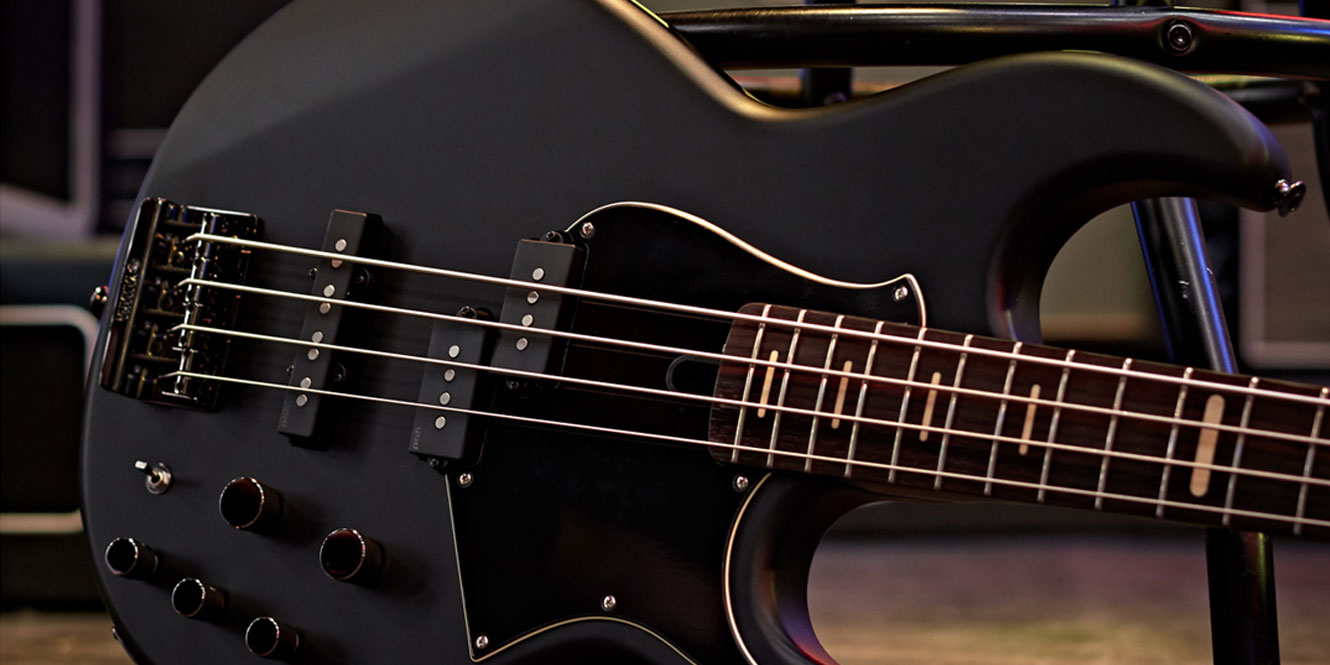











0 Comments